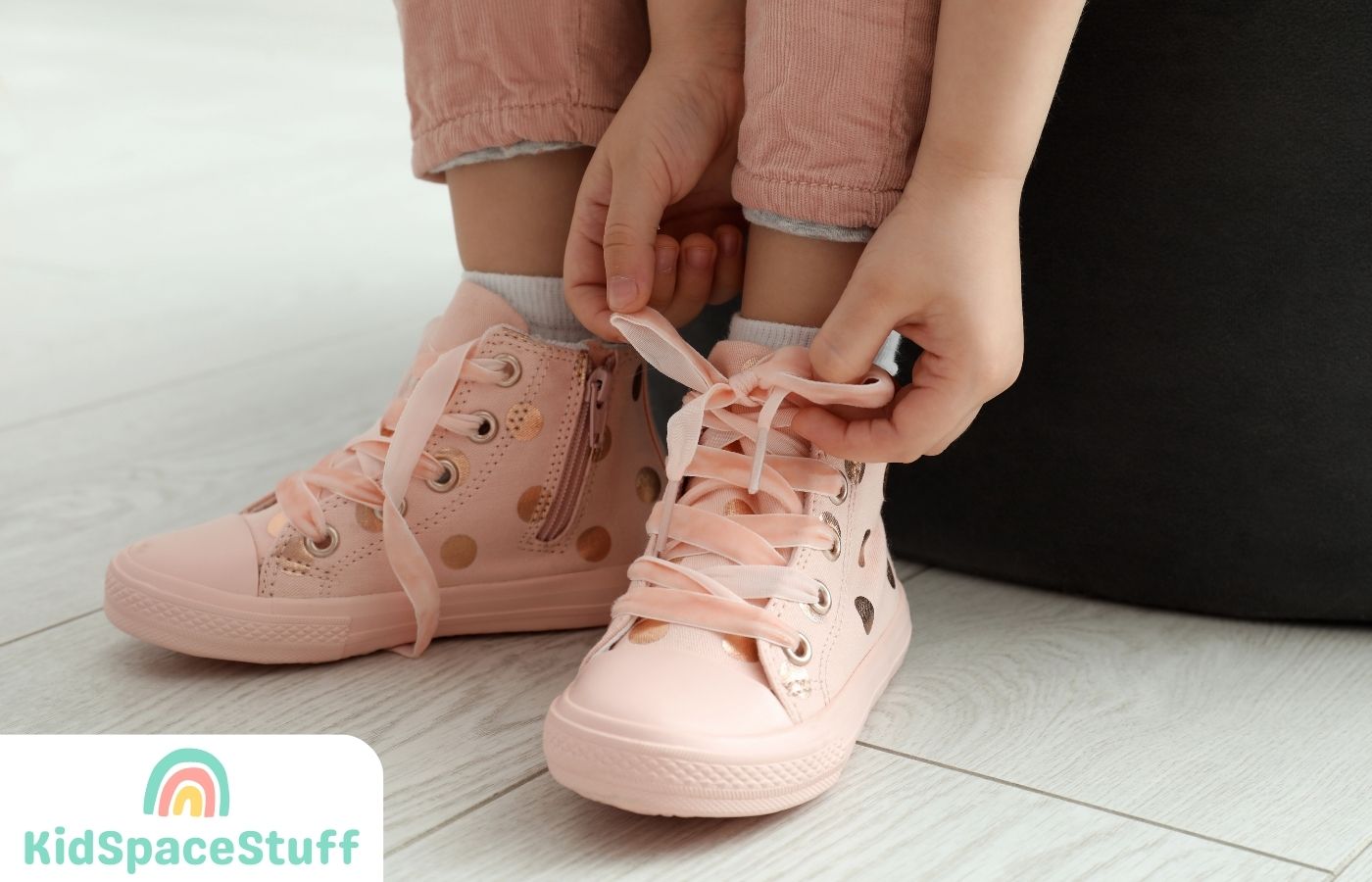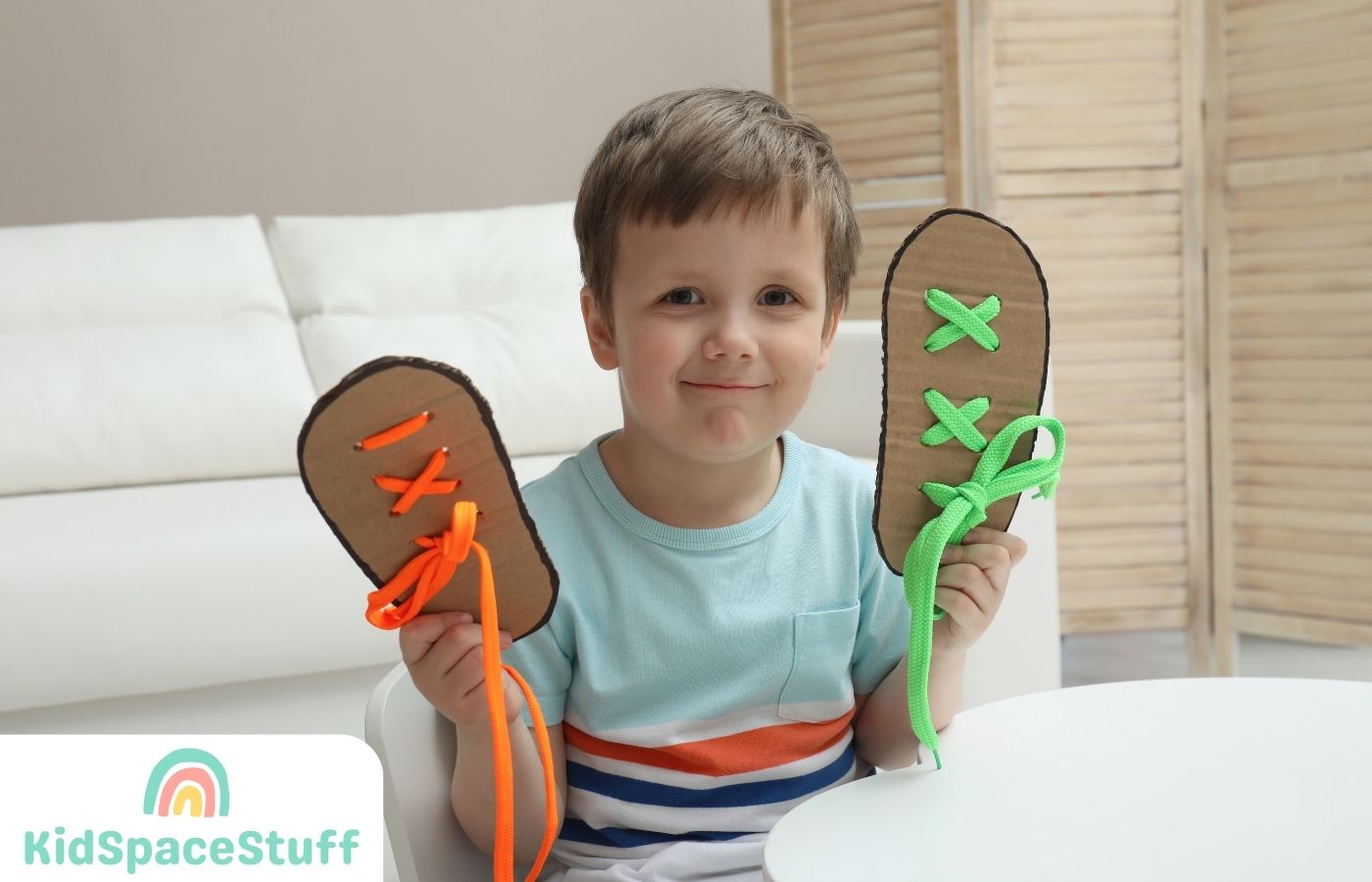As a mother of several children, I’ve seen firsthand that learning to tie shoes is a major stepping stone in a child’s journey to independence.
In this article, I’ll share my insights on this important life skill and provide a comprehensive overview of the shoe tying process. Through personal experiences, practical advice, and supportive guidance, I hope to help fellow parents navigate this stage with ease. So, let’s embark on this journey together and uncover why learning to tie shoes is much more than just a practical task.
Key Takeaways:
- Learning to tie shoes is important for children as it promotes independence and develops fine motor skills and usually occurs between the ages of 4 and 5.
- Signs of readiness for shoe tying include reaching developmental milestones related to hand-eye coordination and finger dexterity, as well as displaying physical signs such as being able to handle shoelaces and tie knots.
- Challenges in learning to tie shoes are common and can include difficulties with hand-eye coordination, finger strength, and understanding the sequence of steps. Developmental delays can also impact a child’s ability to learn this skill.
The Motherly Importance of Learning to Tie Shoes
You see, learning to tie shoes isn’t just about laces and loops. It’s a lesson in independence, patience, and perseverance that carries over into many other areas of our children’s lives.
The Many Benefits of Shoe-Tying

Tying shoes provides our little ones with a sense of responsibility and ownership. From getting dressed for school to lacing up their cleats for soccer practice, they become accountable for their shoes and their comfort. Not to mention, there’s a certain pride that comes from mastering a grown-up task like this. I’ve seen it in the sparkling eyes of each of my children when they first accomplished it.
Moreover, tying shoes is an exercise in fine motor skills, hand-eye coordination, and finger dexterity – all crucial for other tasks like writing or playing musical instruments. The bonus? A securely tied pair of shoes provides stability and lessens the likelihood of accidents due to untied laces.
Even though tying shoes might seem simple to us adults, it can be a complex task for our little ones. The key is to provide them with the right support and encouragement and to arm ourselves with strategies that make the process fun and engaging.
My Journey of Teaching Shoe-Tying
I remember teaching my middle child, just five years old at the time, to tie her own shoes. The early days were filled with her struggling with the laces, but with regular practice and a little parental cheerleading, she finally mastered it. That twinkle of accomplishment in her eyes? Priceless!
Mastering Shoe-Tying: A Step-by-Step Guide from a Mother’s Perspective
To help your little ones master the art of shoe tying, it’s essential to break the process down into simple steps. Here’s how I’ve done it with my kids:
- Get the basics: Show them how to thread the laces through the eyelets and explain the importance of each step.
- Create a loop: Teach them how to fold one lace over itself, bring the other lace behind the loop, thread it through, and create a knot.
- Secure it: Show them how to pull both laces to tighten the knot securely.
Remember, patience is key here. It may take a few attempts, but with practice and your guidance, your child will eventually get it.
Recognizing the Signs of Readiness for Shoe Tying
In my experience, children usually show an interest in learning to tie their shoes around the age of 4 or 5. However, each child is different, and their readiness is dictated by their development. Some indicators of readiness include achieving related fine motor milestones and demonstrating an understanding of basic directions.
Developmental Milestones for Shoe Tying
As a mom, I’ve noticed three major milestones related to shoe tying:
- Conceptual Understanding: This usually develops around 5-6 years old. It includes understanding left from right, knowing how to cross laces, and threading laces through certain holes.
- Physical Dexterity: Developed around 6-7 years old, this involves the ability to pinch, hold, twist, pull and thread laces through eyelets accurately.
- Bilateral Coordination: This develops around 7-8 years old, enabling children to use both sides of their bodies together to accomplish complex tasks like shoe tying.
The Challenges of Learning to Tie Shoes

Just like every other skill, learning to tie shoes comes with its own set of challenges. This process requires patience, persistence, and the ability to sequence steps and actions. It also tests the limits of a child’s attention span and their fear of failure.
In my family, each child faced different hurdles, but with patience, support, and a focus on their individual strengths, they overcame them all. Remember, every child is unique, so don’t worry if your little one takes a bit longer to learn.
Navigating Developmental Delays in Learning to Tie Shoes
Developmental delays can affect a child’s ability to tie shoes. These delays can lead to slower advancement in achieving related milestones, like hand-eye coordination and finger dexterity. However, as a mom who has faced this, let me assure you that every challenge is surmountable. It’s all about recognizing the issues early and applying strategies that help your child learn at their own pace.
Teaching Your Kids to Tie Their Shoes: Tips from a Mom’s Playbook
Teaching children to tie their shoes can be a daunting task. But don’t worry, I’ve got you covered. Here are some tried-and-true strategies from my motherly playbook.
Step-by-step instructions: Start by explaining the parts of the shoelace and the holes. Show them how to hold the laces, cross one over the other, and loop one lace under to create a knot. Patience, practice, and praise are your allies in this process.
Visual aids: Consider using charts, diagrams, or color-coded laces. I’ve found that real shoes and laces, video tutorials, and progress trackers can make the process more engaging.
Fun activities: To keep things light-hearted, turn shoe-tying into a game or a story. Use colorful laces or materials like ribbons or strings to make it visually appealing. Trust me, a pinch of creativity goes a long way in making this learning journey enjoyable!
The journey to independence often starts with the simple act of tying a shoelace. As mothers, we’re here to guide, encourage, and cheer on our little ones every step of the way. With love, patience, and a bit of mom-wisdom, we can help our children master this essential life skill, setting them on the path to self-reliance.
FAQs about When Do Kids Learn To Tie Shoes
When do kids typically learn to tie their shoes?
According to various sources, children usually learn to tie their shoes when they are at least 5 years old.
What are some signs that a child is ready to learn how to tie their shoes?
Signs of readiness include fine motor skills, hand-eye coordination, and the ability to use both hands for tasks.
What are some techniques to make it easier for children to learn how to tie their shoes?
Using two different colored laces can help demonstrate the process, and replacing thin or slippery shoelaces with wide, easy to grasp laces can be beneficial. Additionally, toys like Melissa & Doug’s “Wood Lacing Sneaker” and PlanToys “Plan Preschool Tie-Up Shoe” can assist in teaching this skill.
Are there alternatives to traditional shoe laces for children who struggle with tying their shoes?
Yes, there are alternatives available such as velcro straps and slip-on shoes that can make it easier for children who may find tying shoelaces difficult. Adaptive laces or shoes may also be helpful for children who struggle with this task.
Why are some children learning to tie their shoes at a later age?
Recent studies suggest that changes in shoe design and footwear fashion, as well as the popularity of slip-on shoes and velcro straps, have contributed to children learning to tie their shoelaces at a later age. Additionally, busy parents and an increased reliance on complex technology may also play a role in the delay.
What can parents do if their child is struggling to learn how to tie their shoes?
If a child is struggling with developmental milestones, including tying shoelaces, it is recommended to consult with a pediatrician who may provide referrals for occupational therapy. Occupational therapists can help with fine motor skills and provide strategies to teach shoe-tying in a less stressful way.
Final Thoughts
In conclusion, children typically start learning to tie their shoes around ages 4 to 5, a process which supports their motor and cognitive development. However, each child’s journey is unique and may be influenced by various factors, including developmental progress. As parents, supporting them through patient instruction, positive reinforcement, and fun activities can make shoe-tying an enjoyable and empowering milestone.
Have other questions about your child’s development? Check out these articles!
KidSpaceStuff is a site dedicated to helping parents find the best interior design, activities, and inspiration for their kids.